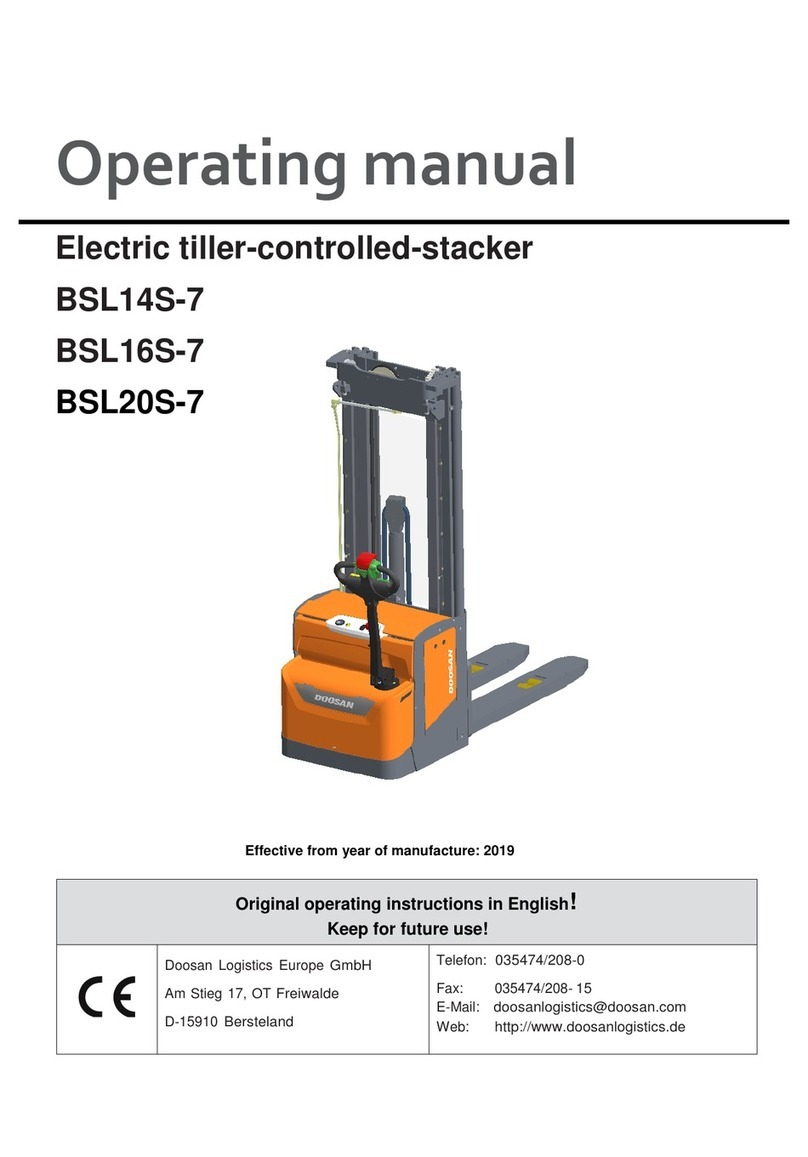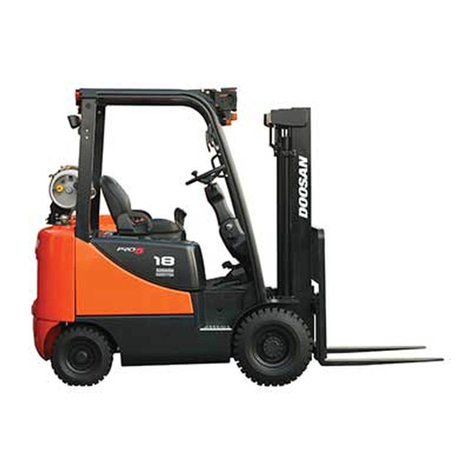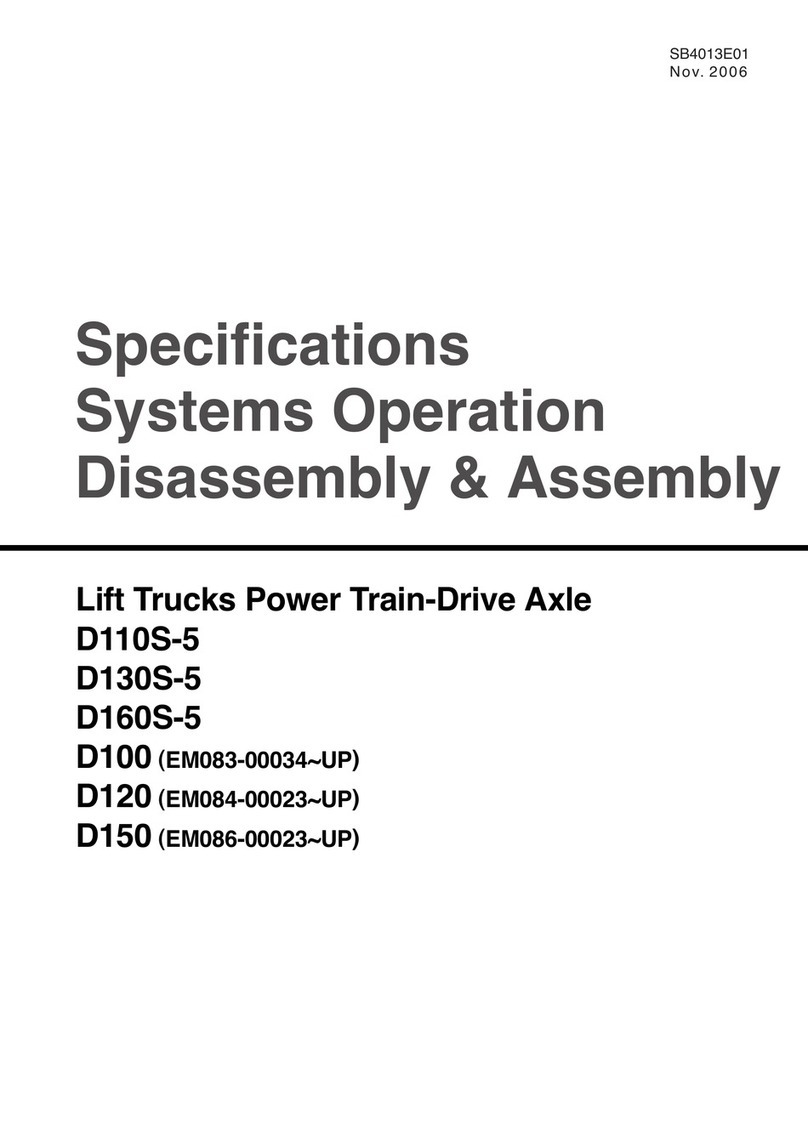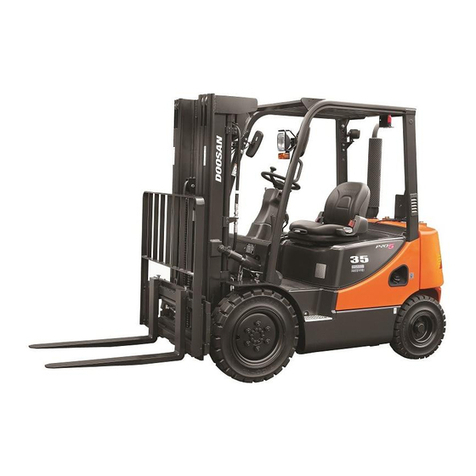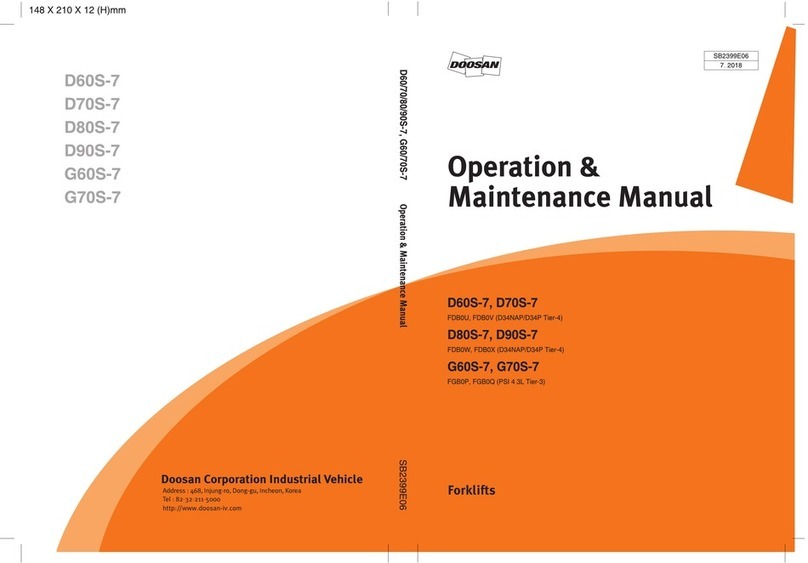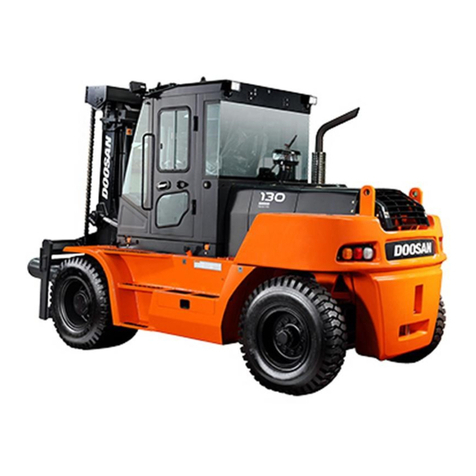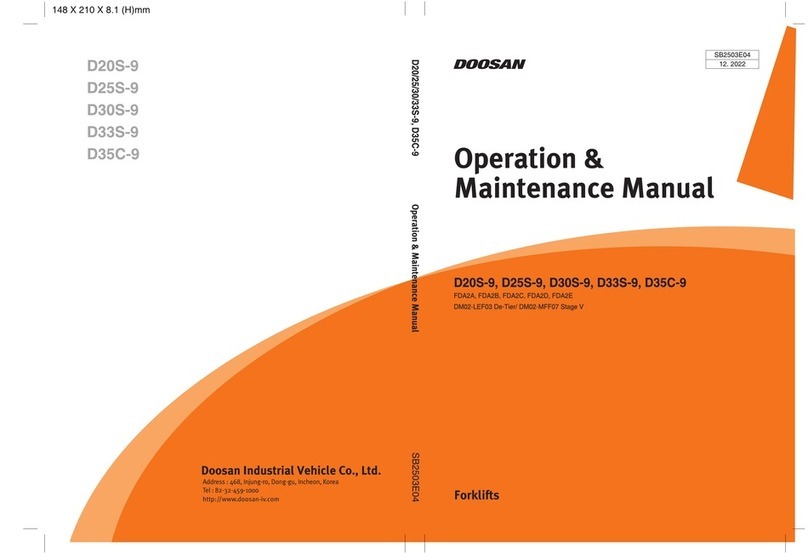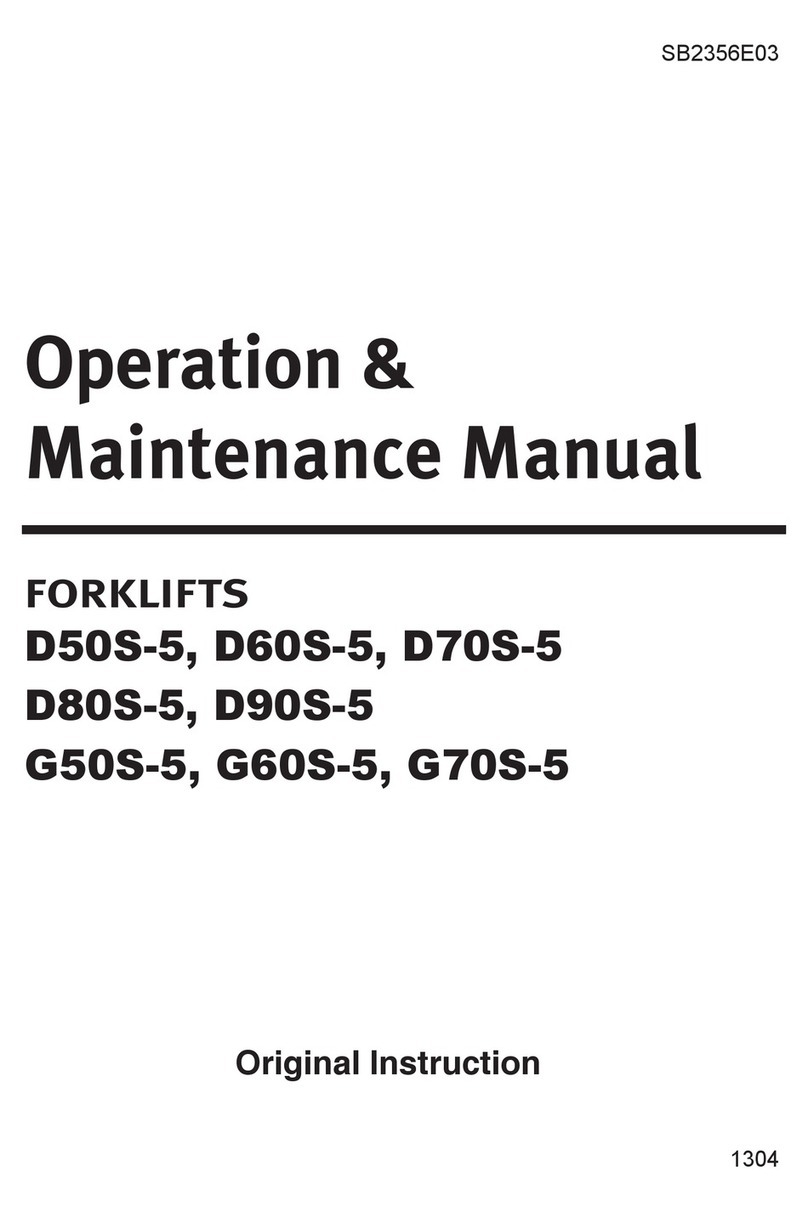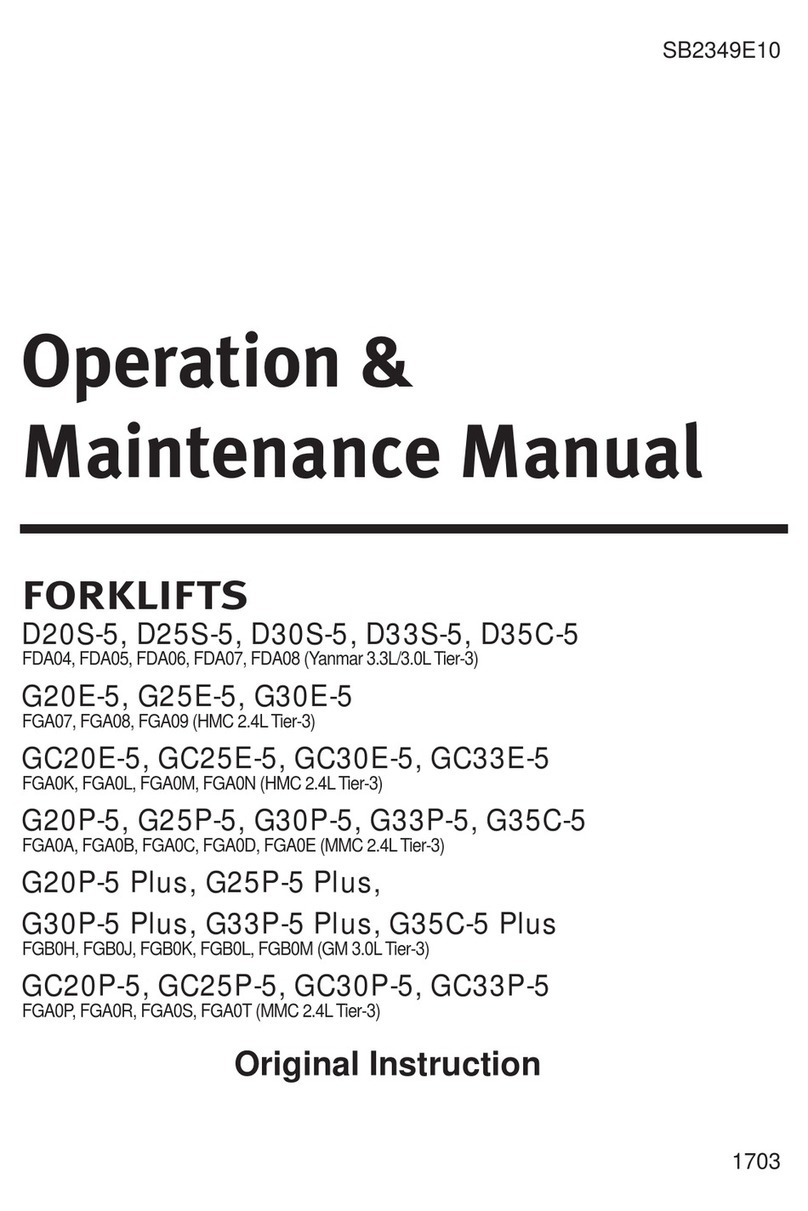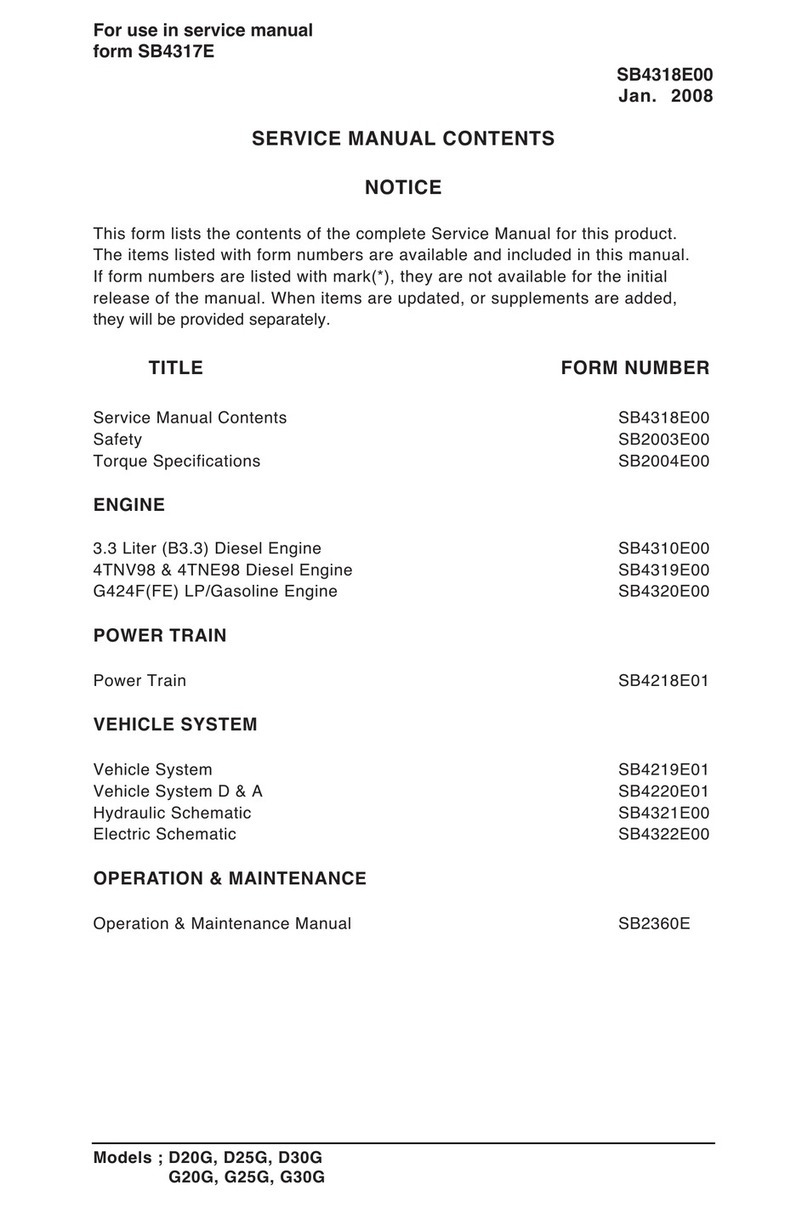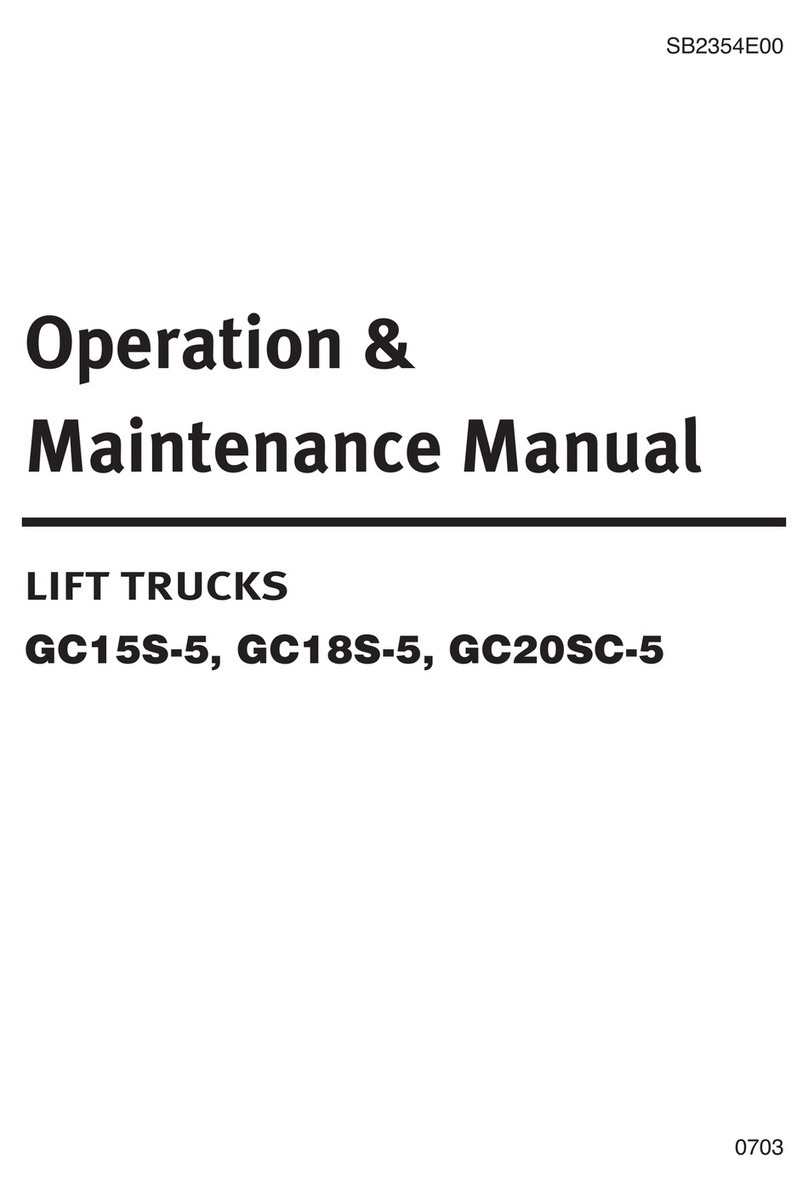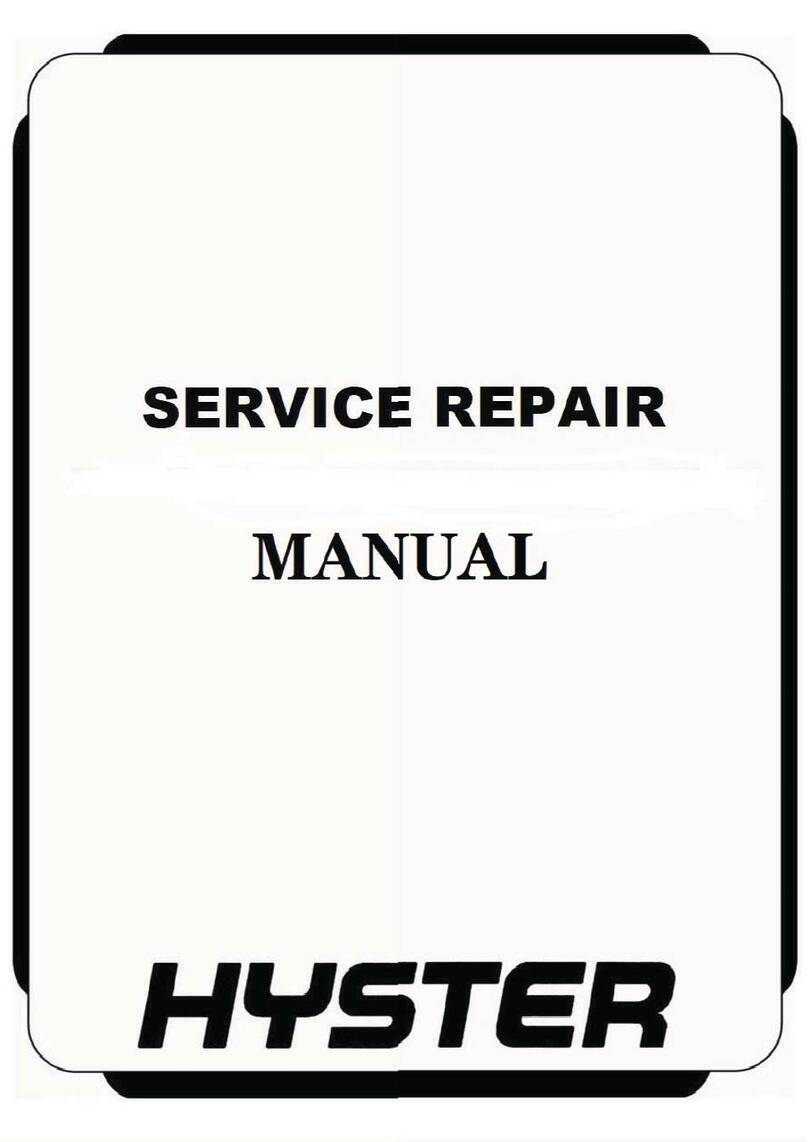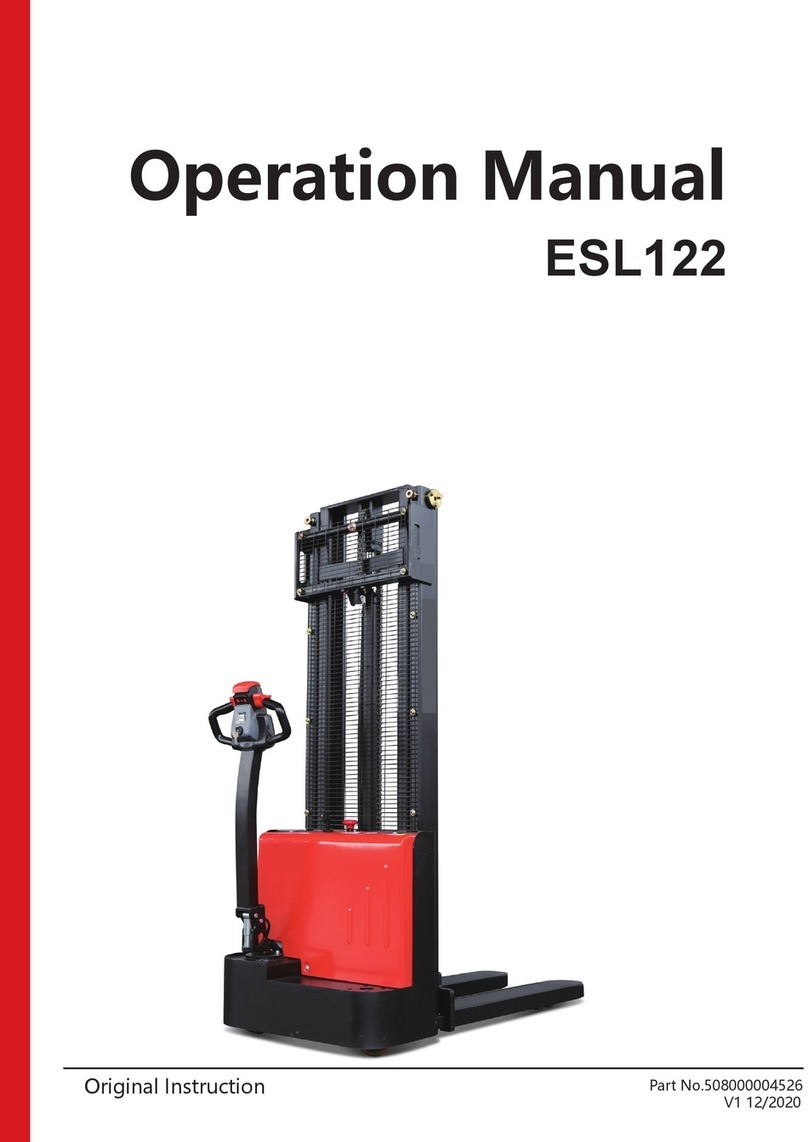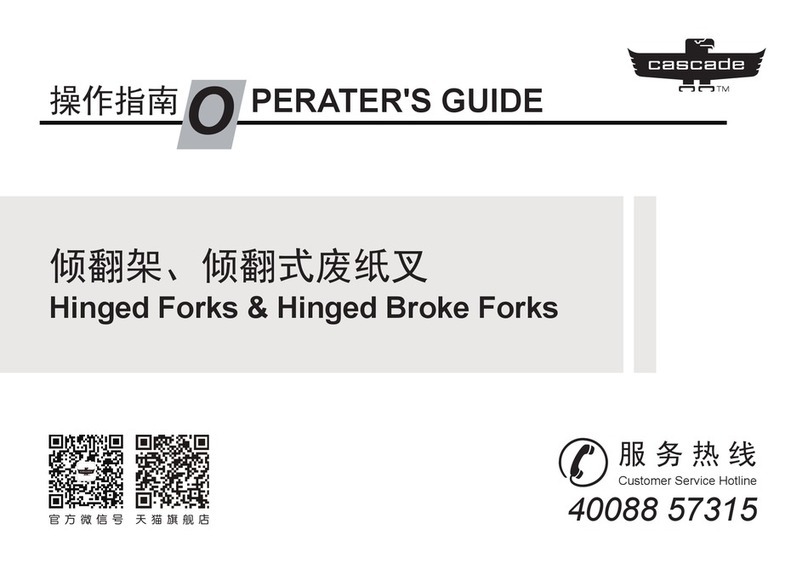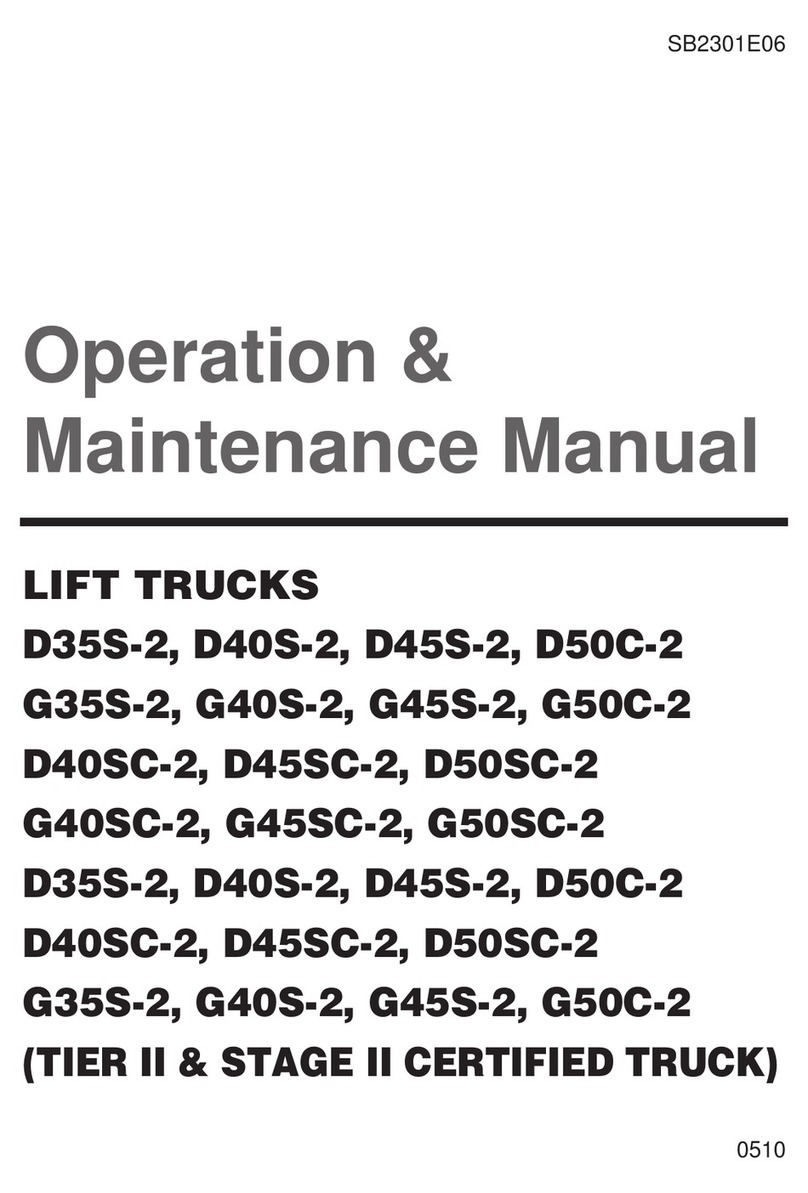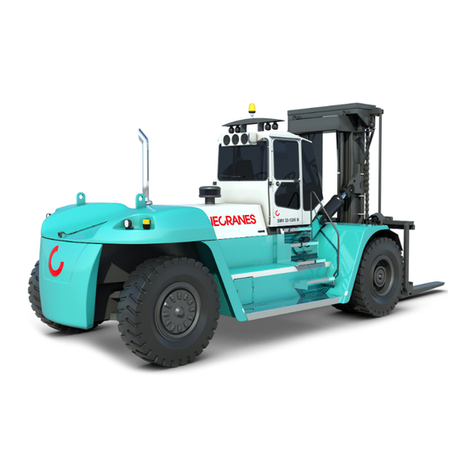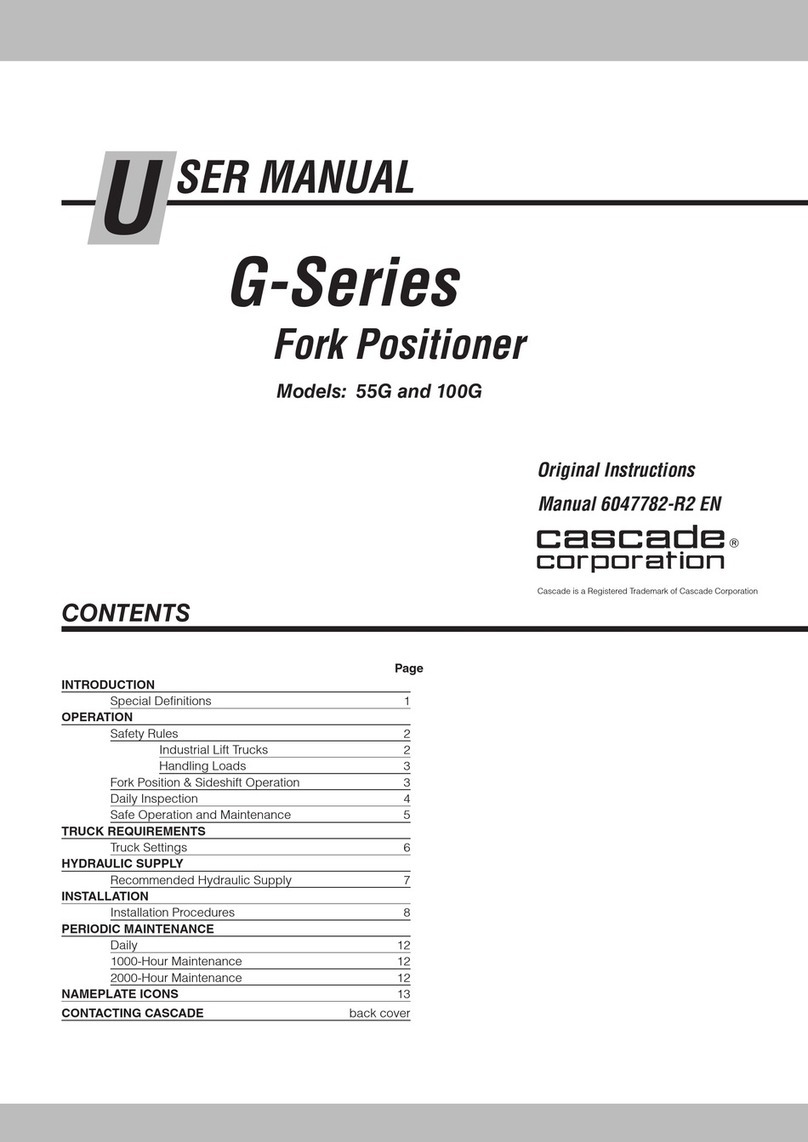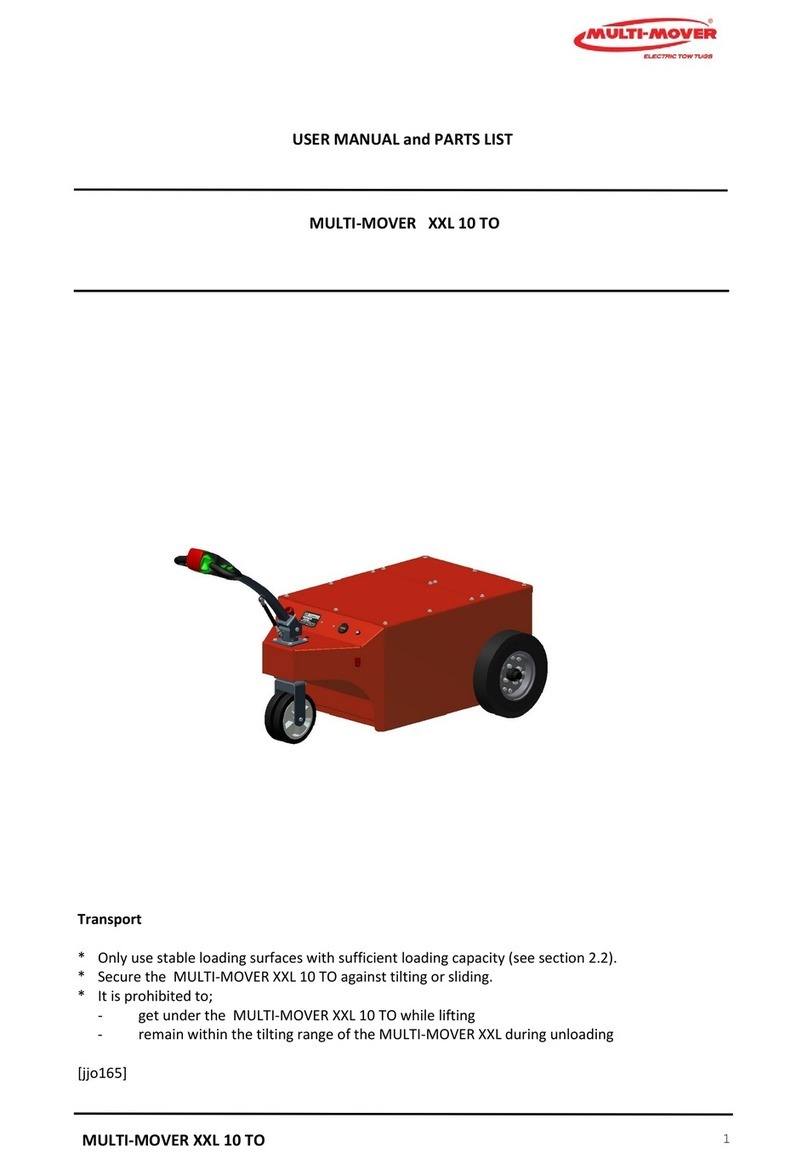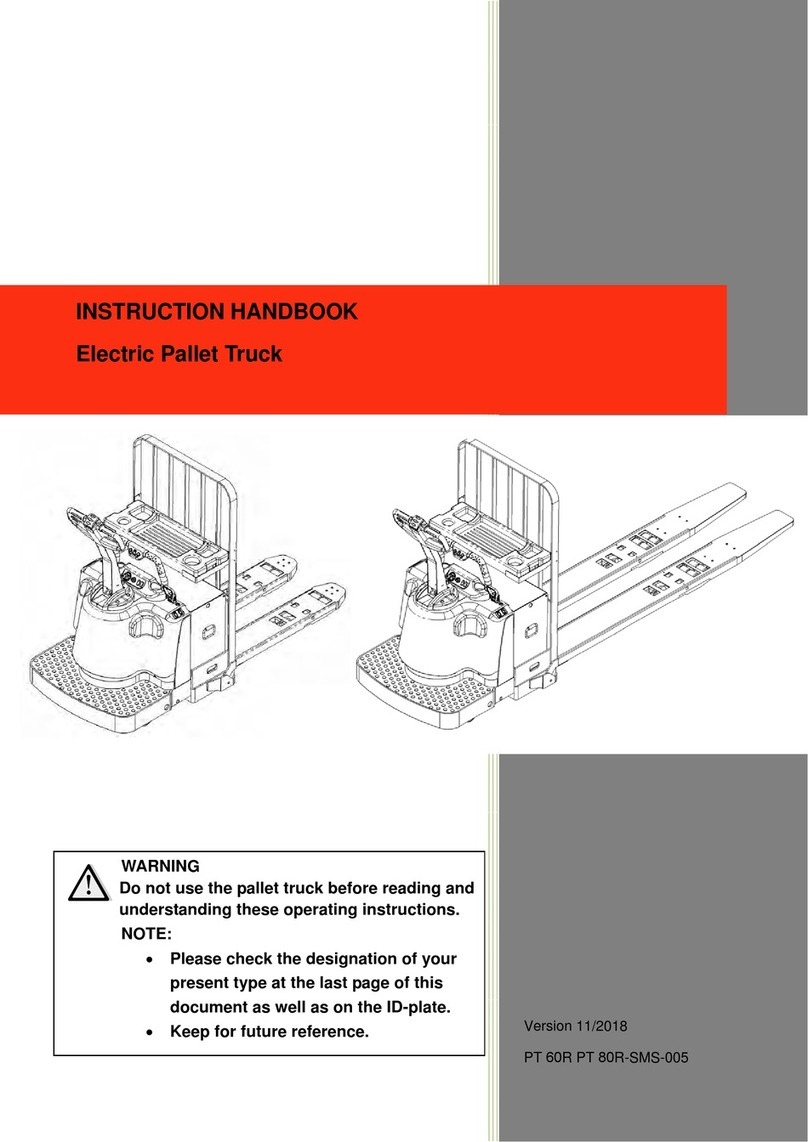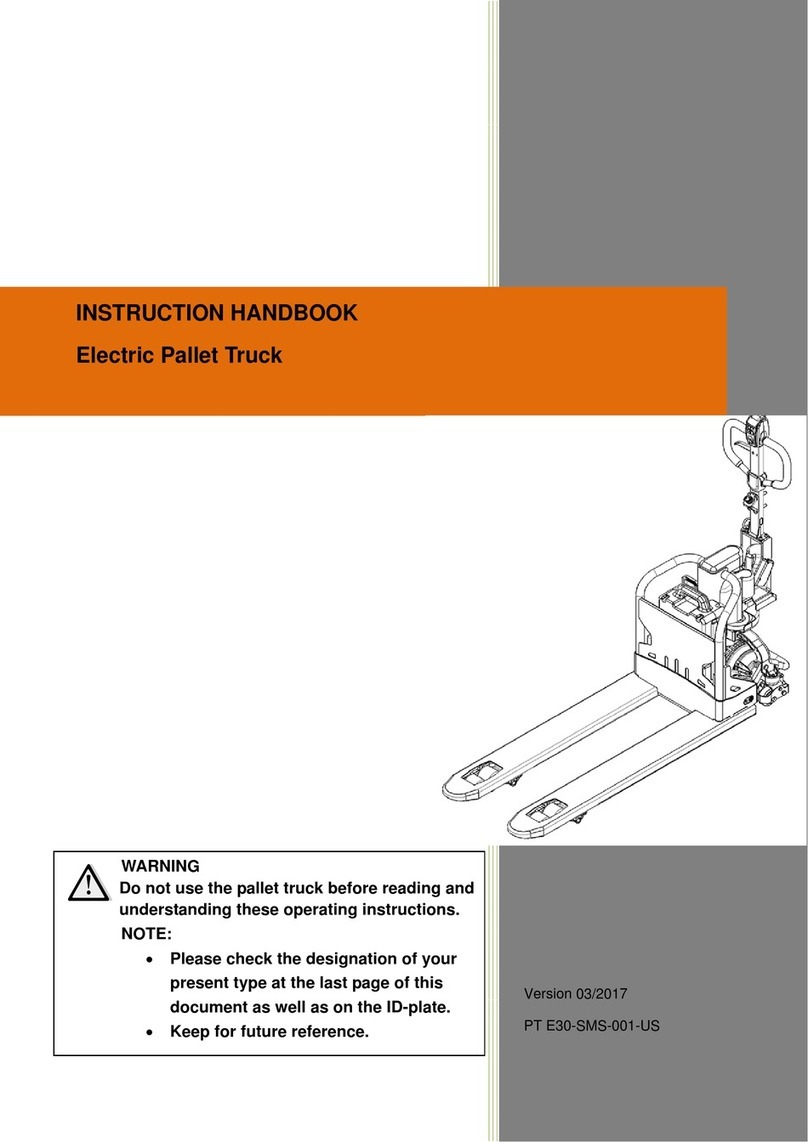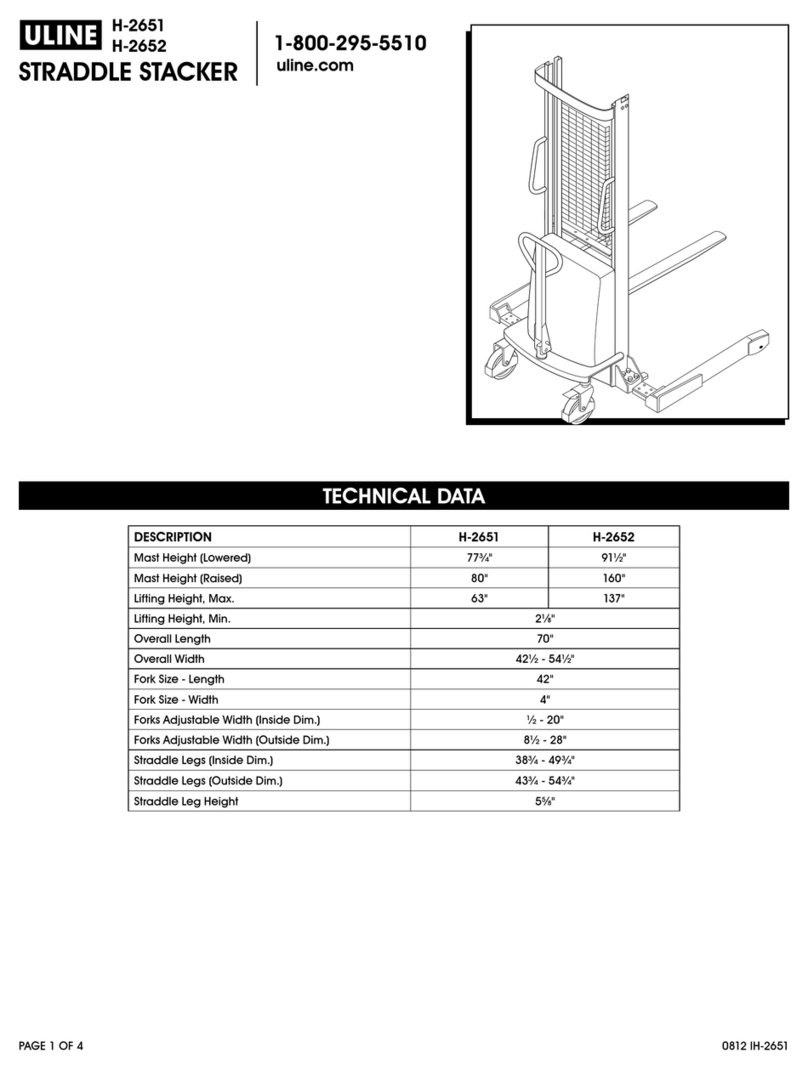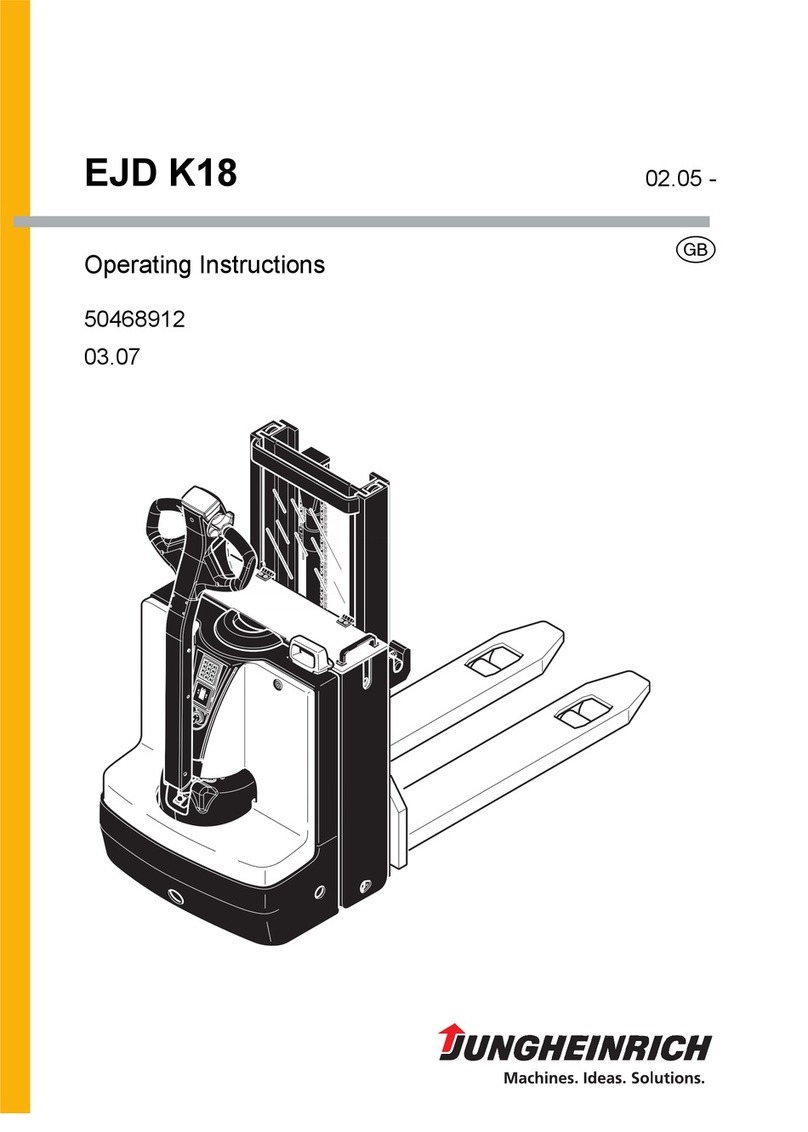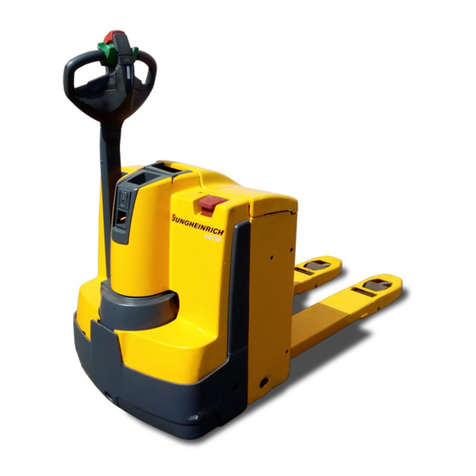
Information Section
-2-
Foreword
Literature Information
This manual should be stored in the operator's
compartment in the literature holder or seat back
literature storage area.
This manual contains safety, operation, transportation,
lubrication and maintenance information.
Somephotographsorillustrationsinthispublicationshow
details or attachments that can be different from your lift
truck. Guards and covers might have been removed for
illustrative purposes.
Continuing improvement and advancement of product
design might have caused changes to your lift trucks
which are not included in this publication.
Read, study and keep this manual with the lift truck.
Whenever a question arises regarding your lift truck, or
this publication, please consult your DOOSAN dealer for
the latest available information.
Safety
The Safety Section lists basic safety precautions. In
addition, this section identifies the text and locations of
warning signs and labels used on the lift truck. Read and
understand the basic precautions listed in the Safety
Section before operating or performing lubrication,
maintenance and repair on this lift truck.
Operator Restraint System (If Equipped)
This manual contains safety, operation andmaintenance
information for the DOOSAN operator restraint system.
Read, study and keep it handy.
WARNING
Your DOOSAN truck comes equipped with an
operator restraint system. Should it become
necessary to replace the seat for any reason, it
should only be replaced with another DOOSAN
operator restraint system.
Photographs or illustrations guide the operator through
correct procedures of checking, operation and
maintenance of the DOOSAN operator restraintsystem.
SAFE and EFFICIENT OPERATION of a lift truck
depends to a great extent on the skill and alertness on
thepartof the operator. To develop this skill the operator
should read and understand the Safe Driving Practices
contained in thismanual.
Forklift trucks seldom tipover, but in the rare event they
do, the operator may be pinned to the ground by the lift
truck or the overhead guard. This could result in serious
injuryordeath.
Operator training and safety awareness is an effective
way to prevent accidents, but accidents can still happen.
The DOOSAN operator restraint system can minimize
injuries. The DOOSAN operator restraint system keeps
the operator substantially within the confines of the
operator’s compartment and the overheadguard.
This manual contains information necessary for Safe
Operation.Beforeoperatingalifttruckmakesurethatthe
necessaryinstructions are available and understood.
Operation
The OperationSectionis areference for the newoperator
and a refresher for the experienced one. This section
includes a discussion of gauges, switches, lift truck
controls, attachment controls, transportation and towing
information.
Photographs and illustrations guide the operator through
correct procedures of checking, starting, operating and
stopping thelift truck.
Operating techniques outlined in this publication are
basic. Skill and techniques developas theoperator gains
knowledge of the lift truck and its capabilities.

